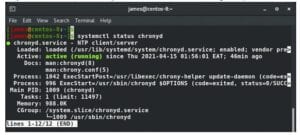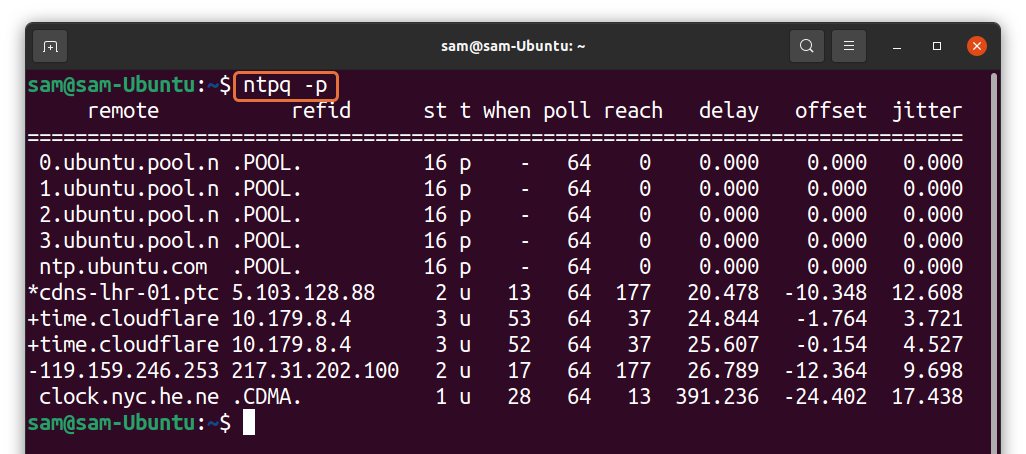
- #Linux file synchronization daemon how to#
- #Linux file synchronization daemon install#
- #Linux file synchronization daemon software#
Here is the content of the file on Fedora: # /etc/rsyncd: configuration file for The file is already included in the Archlinux and Fedora packages, while on Debian it must be created from scratch. Once rsyncd is installed, we can configure it using the /etc/nf file. The main rsync package will be installed as a dependency:
#Linux file synchronization daemon install#
In recent versions of the distribution, to install it, we can use the dnf package manager. On distributions like Fedora, instead, rsyncd, the rsync daemon, is distributed in its own package, rsync-daemon. On Archlinux, instead, we use pacman: $ sudo pacman -S rsync On Debian we can use the apt package manager: $ sudo apt-get install rsync On Debian and Archlinux, the files related to the rsync daemon are included the rsync package, so all we have to do, is to install the latter. Installing the rsync daemon is really easy, since the package and its dependencies are available by default in the all the major Linux distributions repositories. $ – requires given linux commands to be executed as a regular non-privileged user # – requires given linux commands to be executed with root privileges either directly as a root user or by use of sudo command No special requirements are needed to follow this tutorial
#Linux file synchronization daemon software#
Requirements, Conventions or Software Version Used May 01 22:35:04 RHEL chronyd: Selected source Requirements and Conventions Used Software Requirements and Linux Command Line Conventions Category May 01 22:35:02 RHEL chronyd: System clock was stepped by 4.158287 seconds May 01 22:34:58 RHEL chronyd: System clock wrong by 4.158287 seconds, adjustment started May 01 22:34:58 RHEL chronyd: System clock TAI offset set to 37 seconds May 01 22:34:53 RHEL systemd: Started NTP client/server. May 01 22:34:53 RHEL chronyd: Using right/UTC timezone to obtain leap second data May 01 22:34:53 RHEL chronyd: chronyd version 3.5 starting (+CMDMON +NTP +REFCLOCK +RTC +PRIVDROP +SC> May 01 22:34:53 RHEL systemd: Starting NTP client/server. Process: 4579 ExecStart=/usr/sbin/chronyd $OPTIONS (code=exited, status=0/SUCCESS) Process: 4607 ExecStartPost=/usr/libexec/chrony-helper update-daemon (code=exited, status=0/SUCCESS)

Loaded: loaded (/usr/lib/systemd/system/rvice enabled vendor preset: enabled)Īctive: active (running) since Fri 22:34:53 WAT 24s ago Verify if the NTP service has started by checking the status of chronyd service ~]# systemctl status rvice # Get TAI-UTC offset and leap seconds from the system tz database.Ħ. # Specify file containing keys for NTP authentication. # Serve time even if not synchronized to a time source.

# Allow NTP client access from local network. # Increase the minimum number of selectable sources required to adjust # Enable hardware timestamping on all interfaces that support it. # Enable kernel synchronization of the real-time clock (RTC). # Allow the system clock to be stepped in the first three updates # Record the rate at which the system clock gains/losses time. It can be seen after chrony is installed. The chrony configuration file can be found in the path “/etc/nf” on a RHEL 7/8 server and some other distributions. It is not a doubt that there are differences between the two even if their configuration files are almost similar,You may want to click the link below to check their differences. Well, you may drop your perspective with regard to this in the comment section. Some agreed ntp is better than chrony in many ways while some disagreed. There have been a lot of controversial discussions as regards why ntp was joined with chrony in RHEL 7 and finally deprecated in RHEL 8. The chronyd daemon must be up and running on the system before there can be synchronization. In old distributions of RHEL servers and some other distributions, the ntpd daemon with the “ntpdate” tool is the client that is used to synchronize the time of a Linux system over a network from the NTP server, but in newer versions of RHEL and some other distributions, “ntpdate” tool /ntpd daemon has been deprecated and the new NTP client responsible for NTP time synchronization from the NTP server is chrony. Some clustered environment prefers to have an internal central NTP server configured so that other systems in the environment will synchronize time from it.
#Linux file synchronization daemon how to#
There are a few numbers of NTP server pool, a Linux OS by default knows how to use the one closer to the region that is selected during the installation of the operating system. NTP is server/client based, whereby NTP servers are sitting somewhere as a pool of servers in different zones and regions and NTP client will be configured on a Linux system to synchronize time from an NTP server. Network time protocol (NTP) is a protocol that is used to automatically synchronize time over a network.


 0 kommentar(er)
0 kommentar(er)
